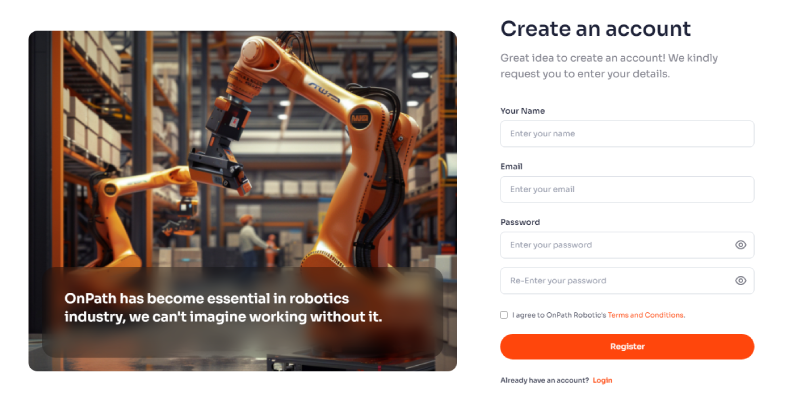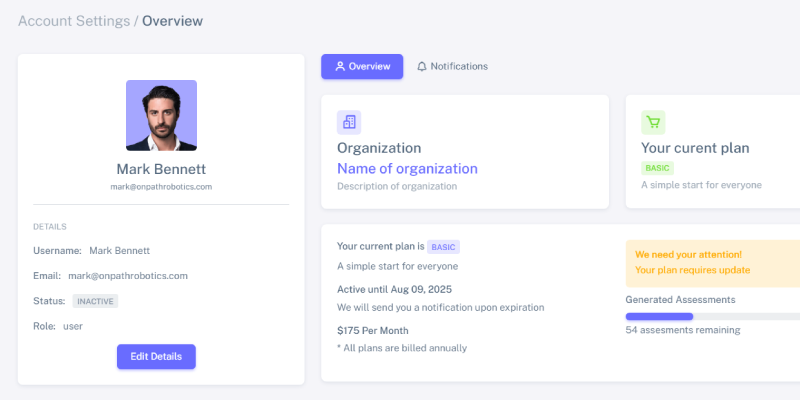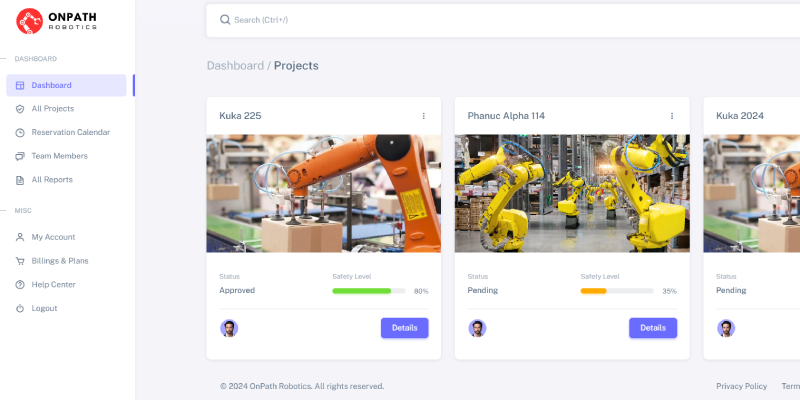
You ask? We answer
Introduction to Risk Assessment
Risk assessment is the process of identifying, analyzing, and evaluating potential risks that could negatively impact an organization's assets, earnings, or success. It's a crucial component of effective risk management and helps organizations prepare for uncertainties.
Why Risk Assessment Matters
- 1. Identifies potential threats and vulnerabilities.
- 2. Helps in prioritizing risks based on their impact.
- 3. Enables proactive decision-making to mitigate risks.
- 4. Ensures compliance with legal and regulatory requirements.
Understanding the basics of risk assessment is the first step towards safeguarding your organization's future. Our platform provides tools and resources to help you navigate this complex process with ease.
How to Use Our SaaS Risk Assessment Tool
Our SaaS Risk Assessment Tool simplifies the process of identifying and managing risks. Here's how you can make the most out of our platform:
Getting Started
-
1. Sign up for an account on our platform.

-
2. Complete your profile and set your organization's preferences.

-
3. Navigate to the Dashboard to access key features.

Our intuitive interface guides you through each step, ensuring a seamless experience. If you need assistance, our support team is here to help.
Setting Up Your First Risk Assessment
Setting up your first risk assessment is straightforward with our tool. Follow these steps to begin:
Step-by-Step Guide
- 1. Go to the 'Assessments' section and click 'Create New Assessment'.
- 2. Input the scope and objectives of the assessment.
- 3. Identify assets and potential threats.
- 4. Evaluate the likelihood and impact of each risk.
- 5. Generate a comprehensive risk report.
Our platform provides templates and guidance at each step to ensure you don't miss any critical details.
Subscription and Pricing
We offer flexible subscription plans to meet the needs of organizations of all sizes. Here's what you need to know:
Pricing Plans
- 1. Basic Plan: Ideal for small businesses starting with risk assessment.
- 2. Standard Plan: Offers advanced features for growing organizations.
- 3. Premium Plan: Provides comprehensive tools for large enterprises.
For detailed pricing information, please visit our Pricing Page or contact our sales team.
Key Features of Our Risk Assessment Tool
Our tool is packed with features designed to streamline your risk assessment process:
Main Features
- 1. Customizable Risk Templates.
- 2. Real-time Risk Monitoring Dashboard.
- 3. Automated Reporting and Analytics.
- 4. Collaboration Tools for Team Assessments.
These features help you manage risks efficiently and effectively, allowing you to focus on your core business objectives.
Customizing Risk Parameters
Every organization has unique risk factors. Our tool allows you to customize risk parameters to fit your specific needs.
Customization Options
- 1. Define your own risk categories and subcategories.
- 2. Set custom risk likelihood and impact scales.
- 3. Create personalized risk matrices.
- 4. Adjust assessment criteria as needed.
Tailoring the risk parameters ensures that your assessments are accurate and relevant to your organization's context.
Interpreting Risk Assessment Reports
Understanding your risk assessment reports is essential for making informed decisions. Our reports provide clear insights into your risk landscape.
Key Elements of the Reports
- 1. Summary of identified risks.
- 2. Risk prioritization based on severity.
- 3. Recommended mitigation strategies.
- 4. Visual representations (charts, graphs) for quick insights.
Our reports are designed to be user-friendly, enabling you to communicate risks effectively to stakeholders.
Best Practices for Risk Management
Effective risk management involves more than just assessment. Here are some best practices to enhance your risk management efforts:
Recommended Practices
- 1. Regularly update your risk assessments.
- 2. Engage stakeholders across the organization.
- 3. Integrate risk management into strategic planning.
- 4. Monitor and review risk mitigation actions.
By following these practices, you can build a resilient organization that is prepared for future challenges.
